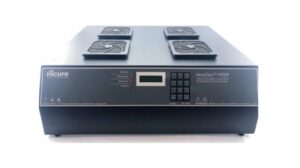When it comes to using UV adhesives, understanding the curing process is crucial to achieving optimal results. UV adhesives are popular for their fast curing times and strong bonds, but a common question arises: Can you overcure UV adhesive? In this blog, we’ll explore the concept of overcuring, its potential effects, and best practices to ensure you get the most out of your UV adhesive.
What is UV Adhesive Curing?
UV adhesive curing involves using ultraviolet light to initiate a chemical reaction that hardens the adhesive. This process allows for rapid bonding and is widely used in industries like electronics, automotive, medical devices, and optics.
How UV Adhesive Curing Works
- Application: The adhesive is applied to the surfaces to be bonded.
- Exposure to UV Light: The adhesive is exposed to UV light, triggering a polymerization reaction.
- Hardening: The adhesive hardens as the reaction progresses, forming a strong bond between the surfaces.
Can You Overcure UV Adhesive?
Understanding Overcuring
Overcuring occurs when the adhesive is exposed to UV light for a longer duration than necessary. While UV adhesives are designed to cure quickly, excessive exposure to UV light can have negative effects.
Potential Effects of Overcuring
- Degradation of Adhesive Properties: Prolonged exposure to UV light can lead to the degradation of the adhesive’s mechanical properties. This can result in a weaker bond, reducing the adhesive’s effectiveness.
- Brittleness: Overcuring can cause the adhesive to become brittle. Brittle adhesives are more prone to cracking and breaking under stress, compromising the integrity of the bond.
- Discoloration: Excessive UV exposure can cause discoloration of the adhesive. While this might not affect the bond strength, it can be undesirable for aesthetic reasons, especially in applications where appearance matters.
- Surface Damage: Overcuring can also affect the surfaces being bonded, particularly if they are sensitive to UV light. This can lead to surface degradation or damage, affecting the overall quality of the assembly.
Best Practices to Prevent Overcuring
1. Follow Manufacturer’s Guidelines
Always adhere to the manufacturer’s recommended curing times and UV light intensity. These guidelines are based on extensive testing and are designed to optimize the adhesive’s performance.
2. Use Proper UV Light Source
Ensure that the UV light source you are using is suitable for the specific adhesive. Different adhesives require different wavelengths and intensities of UV light. Using the correct light source helps prevent overcuring.
3. Monitor Curing Process
Closely monitor the curing process to avoid excessive exposure. Use timers and UV intensity meters if necessary to ensure that the adhesive is exposed to UV light for the appropriate duration.
4. Conduct Tests
Before full-scale application, conduct tests to determine the optimal curing time for your specific setup. This can help you fine-tune the process and avoid overcuring.
5. Shield Sensitive Areas
If certain parts of the assembly are sensitive to UV light, consider using shields or masks to protect these areas during the curing process. This prevents accidental overexposure.
Conclusion
While UV adhesives offer numerous benefits, including fast curing times and strong bonds, overcuring can compromise their performance. By understanding the potential effects of overcuring and following best practices, you can ensure that your UV adhesive bonds are strong, durable, and reliable.
For more information on UV adhesives and their optimal use, feel free to contact us. We are here to help you achieve the best results for your projects.


